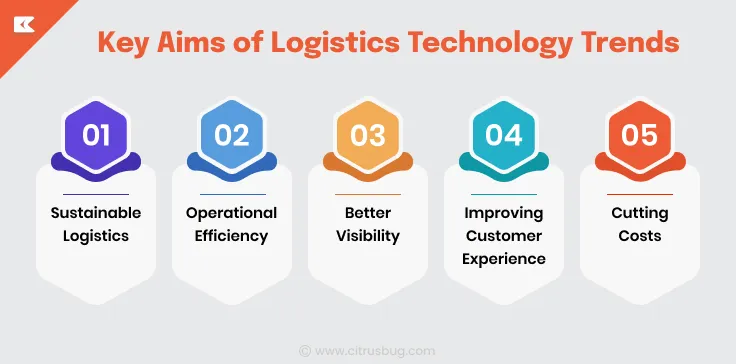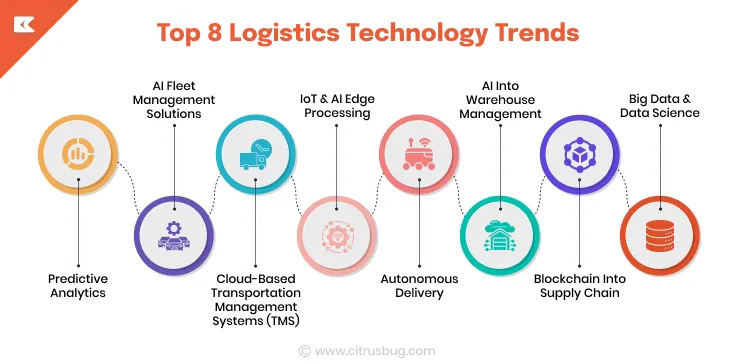Top 8 Logistics Technology Trends to Watch in 2025
- May 21, 2025
-
1825 Views
- by Ishan Vyas
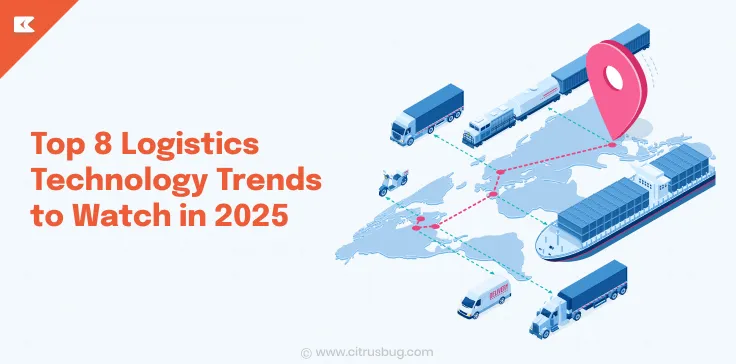
Logistics Technology Trends are reshaping the industry. Learn about the latest innovations driving smarter, faster, and more efficient logistics. Logistics play a fundamental role in global trade and the economy. Logistics facilitates businesses across industries, whether it is an exchange of goods, services, or raw materials. It encompasses vital operations like supply chain management, transportation, warehousing, and procuring inventories. Logistics technology trends are advancing dramatically with the involvement of artificial intelligence, data analytics, data science, and digital transformation. Among these, the benefits of AI in logistics are becoming increasingly evident as companies leverage intelligent systems to streamline operations and enhance decision-making.
Advancements in the logistics industry can be transformative to logistics companies, helping them stay ahead of the curve, be efficient, improve their operational margins, and grow at a scale.
Current Dynamics in the Logistics Industry
The logistics industry is catching up to speed post-pandemic, and the recovery of the global logistics industry is taking place at an impressive CAGR of 6.3%. There are different contributors to such growth of the logistics industry, including growing demands in e-commerce, easier global trades, geopolitical dynamics, and most importantly, technology advancements. As we move into 2025, the logistics industry is worth $11.23 trillion this year, compared to $8.96 trillion in 2023. The growth represents drastic opportunities for innovation and engineering trends in logistics as we will cover in this blog.
However, the industry is fighting actively against consistent challenges such as labour shortage, fuel cost inflation, dynamic competition, and growing customer expectations. That is where top logistics technology trends come into play. AI alone is estimated to boost logistics productivity by 40% by 2035.
Key Aims of Logistics Technology Trends
The logistics industry is entering a new era of global trade where businesses aim to overcome long-standing challenges. Here are some of the aspirations of introducing cutting-edge innovation into logistics:
Sustainable Logistics
As the world focuses more on sustainable living, the logistics industry aspires to eliminate negative environmental impacts through better logistics practices.
Operational Efficiency
Logistics is an operation full of many little activities and processes. Logistics can overcome a lot of operational inefficiencies through insightful planning and execution at every step of the way.
Better Visibility
Lack of visibility in the supply chain management can often catch businesses and trades by surprise, resulting in unforeseen loss of existing customers and new business. Having more visibility would allow businesses to prepare for alternatives and manage their operations against bottlenecks.
Improving Customer Experience
With technology implementations, logistics can improve customer experience, where customers can follow their goods and deliveries through real-time updates and quicker turnarounds.
Cutting Costs
Cost of logistics and supply chains can directly burden the pricing of goods, sales, market positioning of the product, and distribution network. Better resource management through technology can help companies cut logistics costs anywhere from 20% to 40%.
With an arsenal of technologies, these aims become quite realistic and affordable to achieve. The next section covers the details about different logistics technology trends to watch out for in 2025.
Top 8 Logistics Technology Trends
Following global innovation and engineering, logistics enterprises are adapting to the following list of technology trends. These technologies can contribute independently as well as altogether, contributing to the next-gen logistics in different areas such as transportation, supply chain, warehousing, inventory management, or even last-mile deliveries.
1. Predictive Analytics
The logistics industry can benefit from the vast amount of data available at its disposal through millions of deliveries at different times and different locations. Having the right AI solution for predictive analysis helps businesses to meet varying demands accurately. Predictive analytics would enable businesses to plan and prepare their vehicle fleets, goods, and manpower in advance for any surges in market demand.
2. AI Fleet Management Solutions
Fleet management is the backbone of effective logistics operations. With the help of Fleet Management Software Development, AI can assist logistics companies in various areas whether it is:
- Planning vehicles, drivers, and goods to deliver or
- Carefully routing the fleet for time and fuel efficiency.
Optimized fleets would allow quicker deliveries through efficient routes, save on fuel costs, and even enforce safe driving practices. Fleet data can also be extended to manage and address any wear and tear through consistent vehicle maintenance. Such a solution would allow companies to manage fleets of up to thousands of vehicles.
3. Cloud-Based Transportation Management Systems (TMS)
The transportation management system has been transformative for the logistics industry. The idea is to have a central platform through cloud services that is accessible through the internet to centralize data. A TMS can leverage logistics technology trends like data analytics, AI, and predictive analysis for real-time decision making, collaborative operations, and fleet scalability.
4. IoT & AI Edge Processing
Another emerging trend into logistics is the introduction of IoT sensors and edge processing. The Internet of Things enables the use of sensors and devices that leverage internet connection for data, accessibility, monitoring, and analytics. Smart solutions would enable businesses to watch over the real-time progress of their logistics.
Such solutions can help identify any abnormal fleet activities that would limit any losses or theft in transit. Edge processing further enables AI implementations on top of those smart solutions, ensuring robust and precise logistics operations for important supplies such as for cryotherapy, valuable artifacts, as well as for defence needs. IoT into logistics will amount to USD 135.58 Bn by 2030, as per a study.
5. Autonomous Delivery
The next big breakthrough for the logistics industry will be automating transportation and processing. While the idea sounds aspiring, the concept is already under implementation through different companies. Amazon is a frontrunner among popular companies to implement autonomous deliveries with Amazon Prime Air. Amazon Prime Air makes history as the first one in the US to deliver autonomously, particularly in Lockeford, California.
Zipline is another company that leverages drones for autonomous deliveries, making over 1,000,000 deliveries. As per GlobeNewswire, the global market for autonomous delivery will be worth $47.69 Billion by 2026. Autonomous delivery saves a lot of fuel, costs, and human involvement- making logistics predictable and beneficial.
6. AI Into Warehouse Management
AI can help revolutionise other aspects of logistics, including warehouse management. Effective warehouse management is among the top logistics technology trends. Any company can leverage effective warehouse management in order to automate tasks such as order picking, sorting, packaging, and loading into racks. With growing demand for automation, our warehouse management software development company provides tailored AI-driven solutions that help businesses streamline these operations with greater accuracy and speed.
AI in warehouse management can free up human workers for sophisticated work and might even end up saving companies on labour costs. Automation in warehouses would allow 24×7 productivity without any human errors into it.
7. Blockchain Into Supply Chain
It would be impossible to overlook Blockchain while discussing the most disruptive technology trends in logistics. The key advantage of blockchain is the transparency, traceability, and security that it introduces across different areas. Particularly, for logistics, blockchain can be transformative in areas such as pharmaceuticals, governance, and high-value logistics. Research indicates that blockchain-based transparency can reduce order processing times by up to 65% and decrease data entry requirements by approximately 80%
Maersk and IBM took a shot at implementing blockchain in the supply chain with TradeLens as a global trade platform. However, the lack of widespread adoption, commercial awareness, and stakeholder interest led to the discontinuation of the platform. However, it clearly paves the way for better & suitable blockchain implementation in the supply chain.
8. Big Data & Data Science
The logistics industry can leverage its massive data as a stepping stone that can help businesses to read underlying patterns. These patterns can be helpful to companies as it can translate into customer behaviour readings. The data keeps growing, and more data directly reflects in enhancing logistics operations.
With the rapid expansion of global supply chains, logistics companies are now dealing with vast volumes of data generated from various sources such as inventory systems, transportation networks, customer interactions, and real-time tracking tools. This explosion of information necessitates the use of advanced analytics to manage it effectively.
As a result, the Big Data in Logistics Market size was valued at USD 4.3 billion in 2023. Big data with data visualisation would help companies leverage real-time dashboards that can provide insights and analytics into supply-chain management.
Final Thoughts
Logistics play an integral part in any business or any consumer’s life, directly or indirectly. It’s the cornerstone of the global economy. Enhancing logistics would directly reflect in better business operations across almost any industry and would virtually benefit the masses. In 2025, logistics technology trends are evolving around several disruptive technologies, while AI is a frontrunner among them.
In years to come, we will witness engineering and innovation into how warehouses operate, transportations take place, and global logistics becomes sustainable.
At Citrusbug Technolabs, we leverage our deep experience in logistics and inventory management, combined with our niche AI and SaaS expertise, to innovate and implement next-generation logistics solutions. If you’re looking to amplify your operations through our logistics software development, we offer tailored solutions designed to optimise supply chains, streamline inventory, and enhance overall operational efficiency.


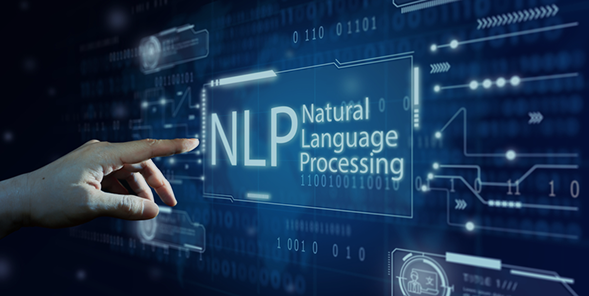
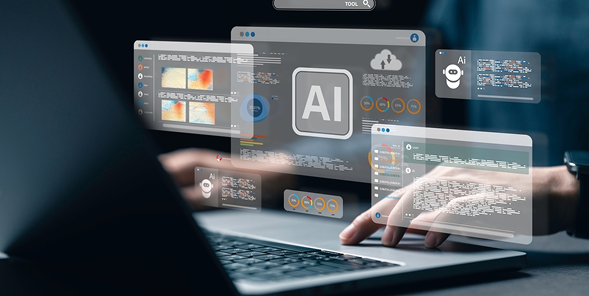

 SaaS Development
SaaS Development Web Application Development
Web Application Development Mobile Application Development
Mobile Application Development Custom Software Development
Custom Software Development Cloud Development
Cloud Development DevOps Development
DevOps Development MVP Development
MVP Development Digital Product Development
Digital Product Development Hire Chatbot Developers
Hire Chatbot Developers Hire Python Developers
Hire Python Developers Hire Django Developers
Hire Django Developers Hire ReactJS Developers
Hire ReactJS Developers Hire AngularJS Developers
Hire AngularJS Developers Hire VueJS Developers
Hire VueJS Developers Hire Full Stack Developers
Hire Full Stack Developers Hire Back End Developers
Hire Back End Developers Hire Front End Developers
Hire Front End Developers AI Healthcare Software Development & Consulting
AI Healthcare Software Development & Consulting Healthcare App Development
Healthcare App Development EHR Software Development
EHR Software Development Healthcare AI Chatbot Development
Healthcare AI Chatbot Development Telemedicine App Development Company
Telemedicine App Development Company Medical Billing Software Development
Medical Billing Software Development Fitness App Development
Fitness App Development RPM Software Development
RPM Software Development Medicine Delivery App Development
Medicine Delivery App Development Medical Device Software Development
Medical Device Software Development Patient Engagement Software Solutions
Patient Engagement Software Solutions Mental Health App Development
Mental Health App Development Healthcare IT Consulting
Healthcare IT Consulting Healthcare CRM Software Development
Healthcare CRM Software Development Healthcare IT Managed Services
Healthcare IT Managed Services Healthcare Software Testing services
Healthcare Software Testing services Medical Practice Management Software
Medical Practice Management Software Outsourcing Healthcare IT Services
Outsourcing Healthcare IT Services IoT Solutions for Healthcare
IoT Solutions for Healthcare Medical Image Analysis Software Development Services
Medical Image Analysis Software Development Services Lending Software Development Services
Lending Software Development Services Payment Gateway Software Development
Payment Gateway Software Development Accounting Software Development
Accounting Software Development AI-Driven Banking App Development
AI-Driven Banking App Development Insurance Software Development
Insurance Software Development Finance Software Development
Finance Software Development Loan Management Software Development
Loan Management Software Development Decentralized Finance Development Services
Decentralized Finance Development Services eWallet App Development
eWallet App Development Payment App Development
Payment App Development Money Transfer App Development
Money Transfer App Development Mortgage Software Development
Mortgage Software Development Insurance Fraud Detection Software Development
Insurance Fraud Detection Software Development Wealth Management Software Development
Wealth Management Software Development Cryptocurrency Exchange Platform Development
Cryptocurrency Exchange Platform Development Neobank App Development
Neobank App Development Stock Trading App Development
Stock Trading App Development AML software Development
AML software Development Web3 Wallet Development
Web3 Wallet Development Robo-Advisor App Development
Robo-Advisor App Development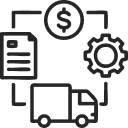 Supply Chain Management Software Development
Supply Chain Management Software Development Fleet Management Software Development
Fleet Management Software Development Warehouse Management Software Development
Warehouse Management Software Development LMS Development
LMS Development Education App Development
Education App Development Inventory Management Software Development
Inventory Management Software Development Property Management Software Development
Property Management Software Development Real Estate CRM Software Development
Real Estate CRM Software Development Real Estate Document Management Software
Real Estate Document Management Software Construction App Development
Construction App Development Construction ERP Software Development
Construction ERP Software Development





